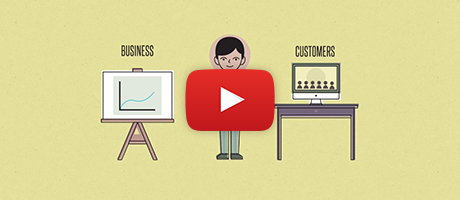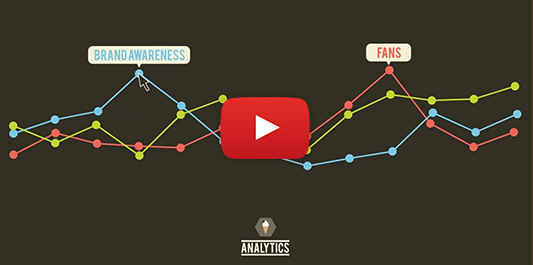Connecting with your customers used to be a very intrusive process. You would have to send direct mail, interrupt them with ads, and generally annoy them just to get their attention. Social media has completely changed that. Now, you have the ability to hyper-target your demographic and engage with them with just a few clicks. However, the way that you use social media personally differs from the way that you use social media as a business. There are two forms of social media that a business can use to grow their audience, leads, and most importantly, sales — organic social media and paid social media.
Using organic social media strategies for your business, you can engage customers in conversations to build trust. These engagements also keep your brand and your products/services top of mind when they decide to make a purchasing decision. In addition to starting conversations, you also have the ability to provide nearly instant customer service. Again, all of these positive interactions serve one purpose – building trust in the eyes of your customers. When you have their trust, you will have their loyalty, which is what keeps customers coming to your business and not your competitors.
Paid social media strategies are the second half of any successful social media marketing campaign. These strategies can be broken down even further into paid social advertising campaigns and paid influencer campaigns.
Paid social media marketing campaigns are advertisements that are run on a social channel such as Facebook, which allow you to hyper-target your demographic. How? Facebook, along with all of the other social channels on the internet, collects user data. They know what all of their users interests are, where they live, what their hobbies are, and more. We can use all of that data to target your exact demographic and only show them ads. This is beneficial for two reasons: it keeps your advertising budget low and increases the chances the person viewing the ad will click it.
Influencer campaigns are social media campaigns where a social influencer (someone with a large audience) is paid to promote your product or service to their audience. This strategy allows your business to connect with people who may not be aware of your product by leveraging the relationship that the influencer already has with that person.
Regardless of the type of social media strategy you are interested in, we can help. Since Facebook opened its advertising platform, we have been helping businesses of all sizes to utilize social media to grow. Want to learn how we can help your business grow with social media marketing? Contact us today for your free, no-obligation consultation.
Frequently asked Social Media Marketing questions.
How many social media channels should my business be on?
The answer to that question depends on where your target demographic is. Are your products visual? You should be on Instagram. Do you sell products that are used in hobbies such as baking or knitting? You should be on Pinterest. The key to selecting the amount of social channels your brand should be on is to make sure that you don’t spread yourself too thin. It is better to be 100% active on two social channels than it is to be 50% active on five social channels.
How do you measure the ROI of social media?
Tracking our campaigns is incredibly important to us because it lets us know how well our strategies are working and what we need to improve upon. First, we start by setting a conversion goal (e.g. completing an online purchase, signing up for your newsletter, calling your business). Next, we use specialized social media software and Google Analytics to track those conversions. Our main KPI’s are: reach, traffic, leads, and conversion rate.
What do you post on my social media channels?
Before starting your social media campaign, we’ll sit down with you and map out a plan. This plan includes what will be scheduled out through the next month and what type of content we should be posting. We like to follow the “80/20 Rule” when it comes to social media content. This means posting informative, fun, and entertaining content 80% of the time and posting promotional content 20% of the time.
How often do you post on my social media channels?
This depends on what we learn from testing different posting frequencies and times. However, we like to start with the following:
- Twitter – Three times per day. Engagement has been shown to decrease slightly after the third tweet.
- Facebook – Two times per day, at most. This is the frequency before organic engagement begin to drop off dramatically.
- LinkedIn – One time per day. Studies have shown that twenty posts per month (1x per weekday) allows you to reach sixty percent of your audience.
- Google Plus – One time per day and the more often you post, the more activity you will get.
- Pinterest – 5x per day, or more. For Pinterest, there is a direct correlation between post frequency and traffic.
- Instagram – One or more times per day. Many major businesses post an average of one to two times per day to Instagram.




